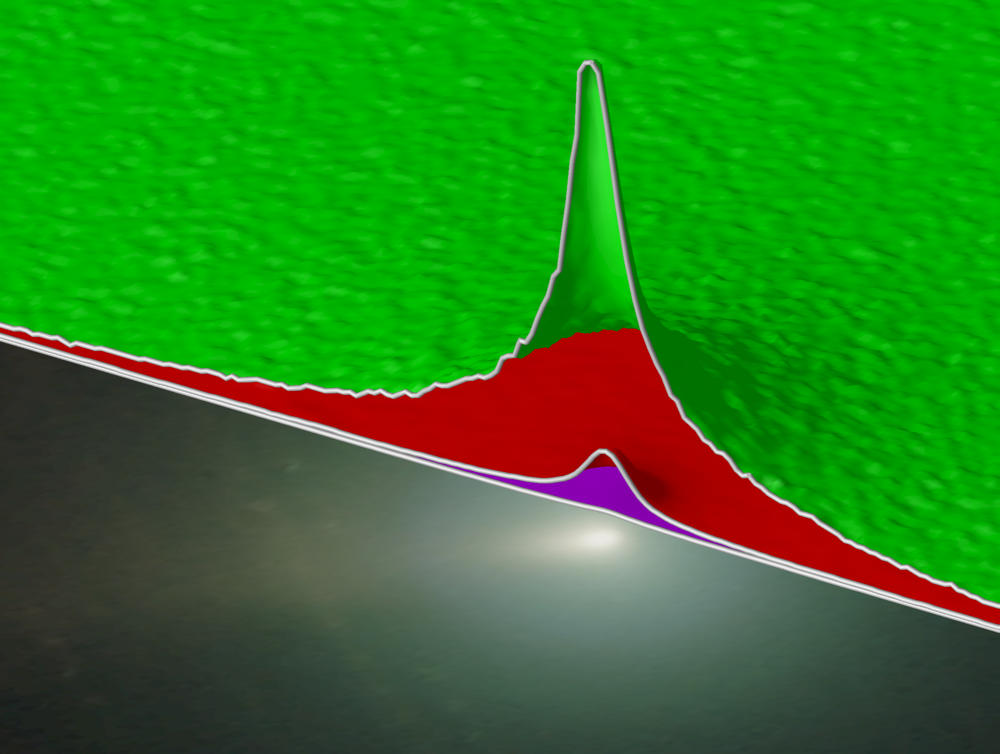
This image was captured with a feature of MetaGuide that tracks comets by locking onto a guidestar but guiding on a virtual star moving relative to it at a rate matching the comet motion. The tail shows clearly in this image and is about 5' long. Note the reddish color of the tail, and the fact that it is dark along one side and glowing on the other. The head shows a possible additional tail forming, evident in its non-circular shape, which is also shown below.
The distinctive green color of the comet is evident in the above image. Many web pages attribute this color to cyanogen, but I believe this is in error. The main cyanogen (CN) line is at 370nm, with a fainter one at 420. Instead, the strong green color is presumably due to diatomic carbon (C2) with emission at 511 and 514nm. This doesn't mean that cyanogen isn't present; just that if it is present, it would show in the deep violet, rather than green.
- Optics: Celestron C11 at f/4.5
- Mount: Celestron CGE
- Guiding software: MetaGuide with shifted comet tracking
- Camera: Starlight Xpress SXVF-H9c
- Guiding Camera: Lumenera SKYnyx 2-0M @ 7.5 fps
- Guiding mode: Off-axis guiding with Taurus III tracker
- Guide Star: Approximately Mag. 8.5
- Image Details: 50x2m guiding on star with compensation for comet motion
- 0.9" per pixel
- Image Processing: ImagesPlus, darks, flats, bias. Sigma combine. No Photoshop
- Date and Location: July 12, 2007. Hudson Valley, NY. 11:30PM EDT, 3:30 UT July 13.

This is a composite image showing the comet in 3 spectral bands: UV (purple) Green, and Red. The three surfaces correspond to intensities in those bands superimposed above a true color image of the comet. Note the weakness of the UV signal in comparison to the green. This is consistent with very faint presence of cyanogen in the UV, compared to C2 in the green. Visualization and true color image by Frank Freestar8n; UV data captured by Andre Paquette.

This is a three-dimensional surface representing the luminance of the comet, with isolines to emphasize the protruding lobes.
Back to MetaGuide main site and forum
Questions, comments, join the forum at https://www.smallstarspot.com/